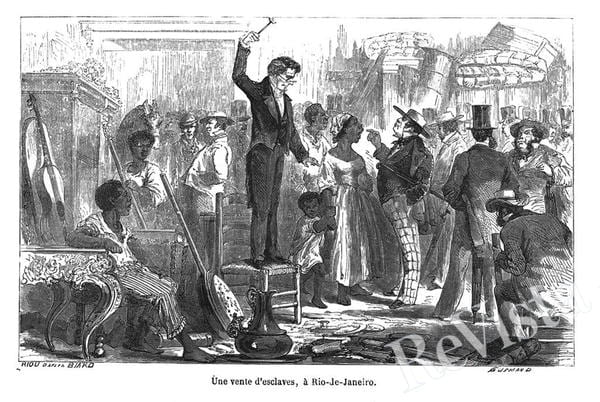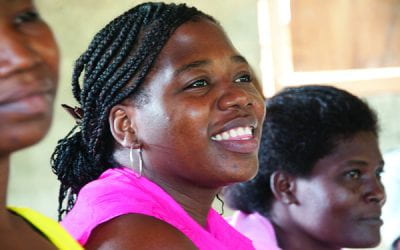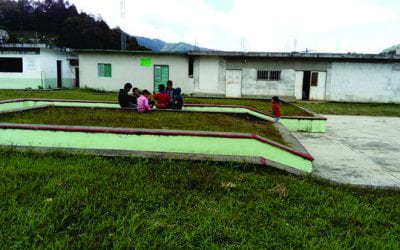Slavery and Precarious Freedom
A Strange Co-Existence in 19th-century Brazil
Slavery was a form of labor exploitation in which workers became the property of others; slaves were considered things, thus routinely exposed to transactions such as sale, auction, mortgage, renting. They appeared in last will and testaments, scribes duly recorded them in post mortem inventories, and masters bequeathed them to their heirs. Deeds of sale are common in surviving archives pertaining to slave societies, often recording the separation of couples, of parents and children, the constant disruption of families and slave communities. Violence against them was rampant, often combined with other strategies to intimidate and discipline the labor force. Twelve million Africans were taken from their native lands to be enslaved in the Americas from the 16th to the 19th centuries.
Beyond these common characteristics, however, slave societies differed sharply from one another. Readers familiar with the characteristics of slavery in the U.S. South may nd surprising that about five million Africans arrived in Brazil as a result of the slave trade, as opposed to fewer than four hundred thousand coming to the United States. While achieving freedom seemed a meaningful possibility for slaves in Brazil, manumission was virtually impossible for slaves in the U.S. South; while slaves in Brazil were distributed throughout the national territory, with a significant number of them living in urban areas, the United States is known for its sharp North/South divide in regard to slavery and for the concentration of the enslaved in the plantation economy.
According to the census of 1872, the only national census carried out in Brazil before the abolition of slavery in 1888, the country had a population of nearly 10 million people, of whom about 8.5 million were free and 1.5 million remained slaves. Regarding the racial composition, 38 percent were white, approximately 20 percent black, more than 38 percent pardos (mixed race), and 3.9 percent indigenous. People of African descent (blacks and pardos together, including all social conditions–that is, free, freed and slave) comprised 58 percent of the total population, or approximately 5.7 million people. Another way of looking at these numbers is that about three out of every four people of African descent in Brazil lived as free or freed while slavery still existed in the country, a sharp contrast with just about 11 percent of African descendants who were free or freed in the United States in 1860.
The different demographics of slavery in Brazil and the United States raise a number of interesting questions, but in this text let us just think about the fact that in Brazil, to a greater extent than in other slave societies, a significant number of enslaved people achieved freedom, for themselves and their descendants while slavery continued to exist, with about 74 percent of people of African descent being free or freed in 1872. What consequences do these demographics have in regard to the experience of freedom? What was it like to live as a free or freed person of African descent in a society in which so many people who shared your race and cultural legacies remained in bondage, performing similar jobs, moving in the same spaces? In sum, what was freedom like for black people in Brazilian slave society, and what were the legacies of that situation for the post emancipation period?
The short answer to the questions above is that freedom was very precarious while slavery existed. People of African descent remained vulnerable in the post-emancipation period in part because of the risks associated with freedom during slavery. Although manumission rates were relatively high in 19th-century Brazil, slave owners granted a significant number of conditional freedoms. Usually about 30 to 50 percent of freedoms depended on the ful llment of a condition stated in a letter of liberty, such as continued service for a number of years or until the death of the owner. In addition, freedoms could be reovked. Many freedoms were revoked informally, as for example when a proprietor promised to free a slave in his or her last will and testament, but then decided to sell the slave before his or her death and the ensuing opening of the testament. A letter of manumission could also be revoked by means of another letter explicitly annulling the freedom previously granted. Revocation of freedoms remained a egal possibility for owners until the gradual emancipation law of 1871. A slave could buy his or her liberty from the owner, but self-purchase often involved borrowing money from a third party, and then working for years under slave-like conditions to pay the sum back to the lender.
Perhaps the main fact that rendered freedom precarious for people of African descent in 19th-century Brazil was the widespread practice of illegal enslavement. Despite a law that prohibited the African slave trade to Brazil in 1831, Africans continued to arrive there as contraband until 1850, when a new law again abolished the slave trade, but this time was enforced. More than 750,000 people were illegally enslaved as a result of the contraband trade after 1831 (about twice the total number of Africans brought to the United States!). Pretending not to see that so many enslaved Africans working in the plantations and urban areas had been smuggled to the country required certain institutional and policy “adaptations,” so to speak. For example, in the 1830s, the chief of police of the city of Rio de Janeiro defended the idea that in the case of “blacks” (pretos) arrested by the police because they were suspected of being runaway slaves: “it is more reasonable (…) to presume their bondage, until they present a certificate of baptism or a letter of liberty to prove otherwise” (Arquivo Nacional, Rio de Janeiro, police correspondence). In other words, according to this doctrine, which clearly prevailed in the long run, blacks apprehended by the police should all be deemed slaves until proven otherwise.
On the one hand, postulating that Africans and their descendants should be presumed slaves allowed authorities not to investigate the possible right to freedom of hundreds of thousands of Africans smuggled into the country; on the other hand, free and freed people of African descent found themselves under the constant threat of being suspected of being slaves, thus running the risk of being auctioned off back to slavery in case they did not manage to prove their status as free or freed.
Conditional manuissions, revocation of freedoms, illegal enslavements, and police assumptions about the bondage of people of African descent show that the boundaries between slavery and freedom in 19th-century Brazil were often uncertain. In this situation, and considering the high percentage of free and freed people of African descent in the population while slavery still existed, meanings associated with skin color, command of the Portuguese language, body language, modes of dressing and other cultural traits became a decisive aspect of black experience. Giving the wrong signs might trigger suspicionby the police or others invested with the mantle of white supremacy, thus ensuing harassment, arrest as a runaway, and risk of auction and enslavement.
Police correspondence pertaining to the city of Rio allows fascinating glimpses of the daily construction of the subtleties in the perception of race originating in this tense and con ictual world of uncertain frontiers between slavery and freedom. For example, on November 11, 1835, “the black Domingos Cabinda, a slave of Mariano So-and-So, was arrested as a runaway and sent to the Calabouço” (a prison for slaves in Rio; my italics). “Cabinda” indicated the African origin of Domingos and it seemed to be enough justification for suspecting that he was a runaway slave. On March 11, 1836, “Joaquim Kassange, who says that he is a freed man,” was “seized for begging needlessly.” In this case, “Kassange” was another sure indication of African origin; for this reason, Joaquim’s allegation that he was free led the scribe to express some misgivings: he “says that he is a freed man.” Another entry for November 11, 1835, begins this way: “Arrested for vagrants, and sent (…) for naval service were João Antônio da Silva, a black freedman (…).” Here the approximation of the words “black,” “freed” and “vagrant” indicates a looming threat to the scores of free and freed people of African descent living in the city of Rio—then and now. As slavery declined in the 1870s and 1880s, harassment and detentions associated with the suspicion of being a runaway slave gave away to a rapidly rising number of arrests for “vagrancy.” The politics of racial designations and meanings, in Brazil, originated in the tense exercise of negotiating social places and conditions in a society where slavery and freedom coexisted in intense and largely indeterminate ways for a very long time.
Winter 2018, Volume XVII, Number 2
Sidney Chalhoub is Professor of History and of African and African American Studies at Harvard University. A Brazilian historian, he has published five books, including A força da escravidão: ilegalidade e costume no Brasil oitocentista (2012), on illegal enslavement and the precariousness of freedom 19th-century Brazil.
Related Articles
Afro-Latin Americans: Editor’s Letter
My dear friend and photographer Richard Cross (R.I.P.) introduced me to the unexpected world of San Basilio de Palenque in Colombia in 1977. He was then working closely with Colombian anthropologist Nina de Friedemann, and I’d been called upon by Sports Illustrated to…
Witches, Wives, Secretaries and Black Feminists
The issue of gender has been front and center for me, both as a subject of my fieldwork on black politics in Latin America, and how I conducted that research, particularly in how I…
Compañeros En Salud
English + Español
I have lived in non-indigenous rural Chiapas in southern Mexico since 2013, working with Compañeros En Salud (CES)—a Harvard af liated non-profit organization that partnered with…





